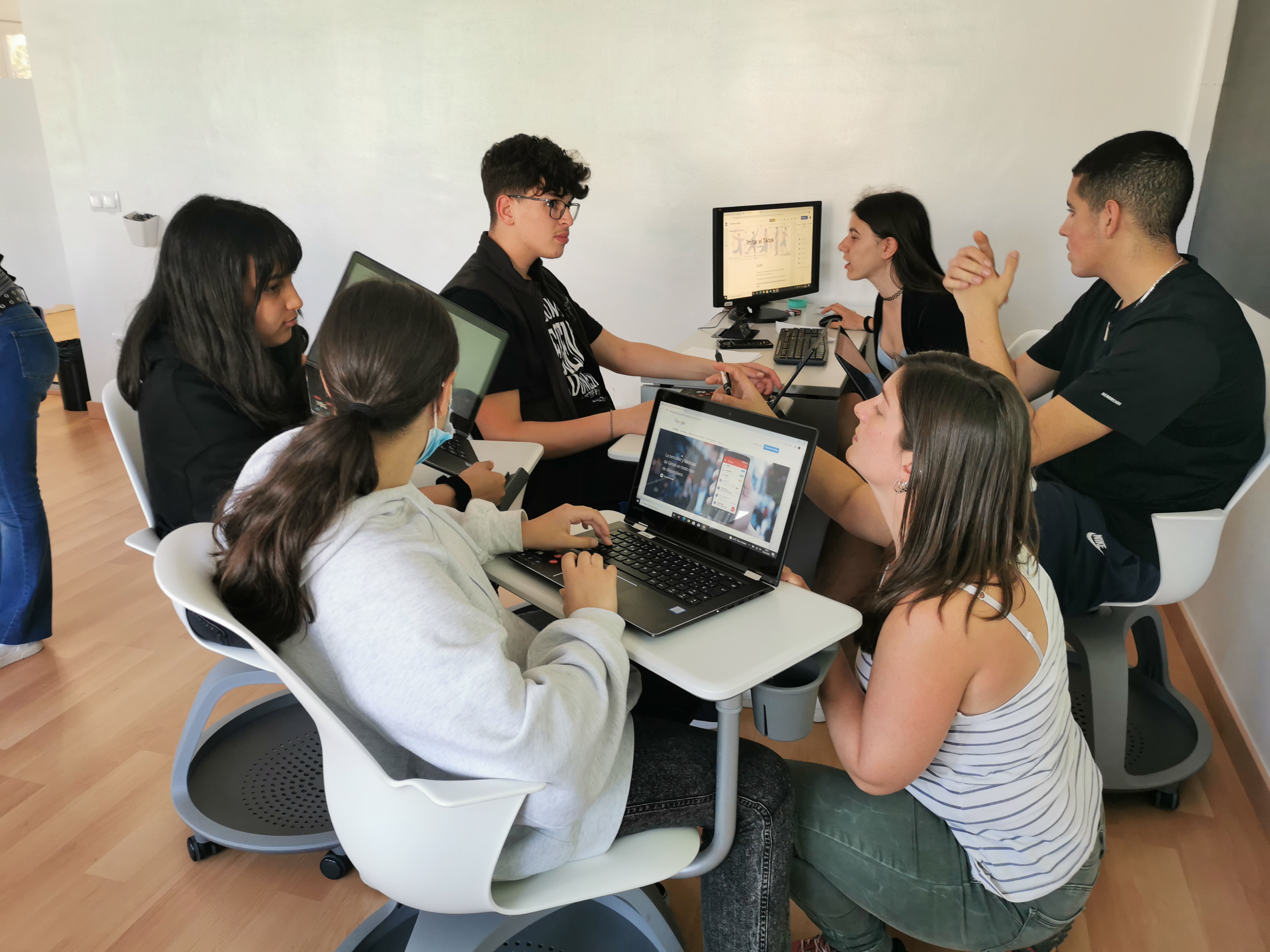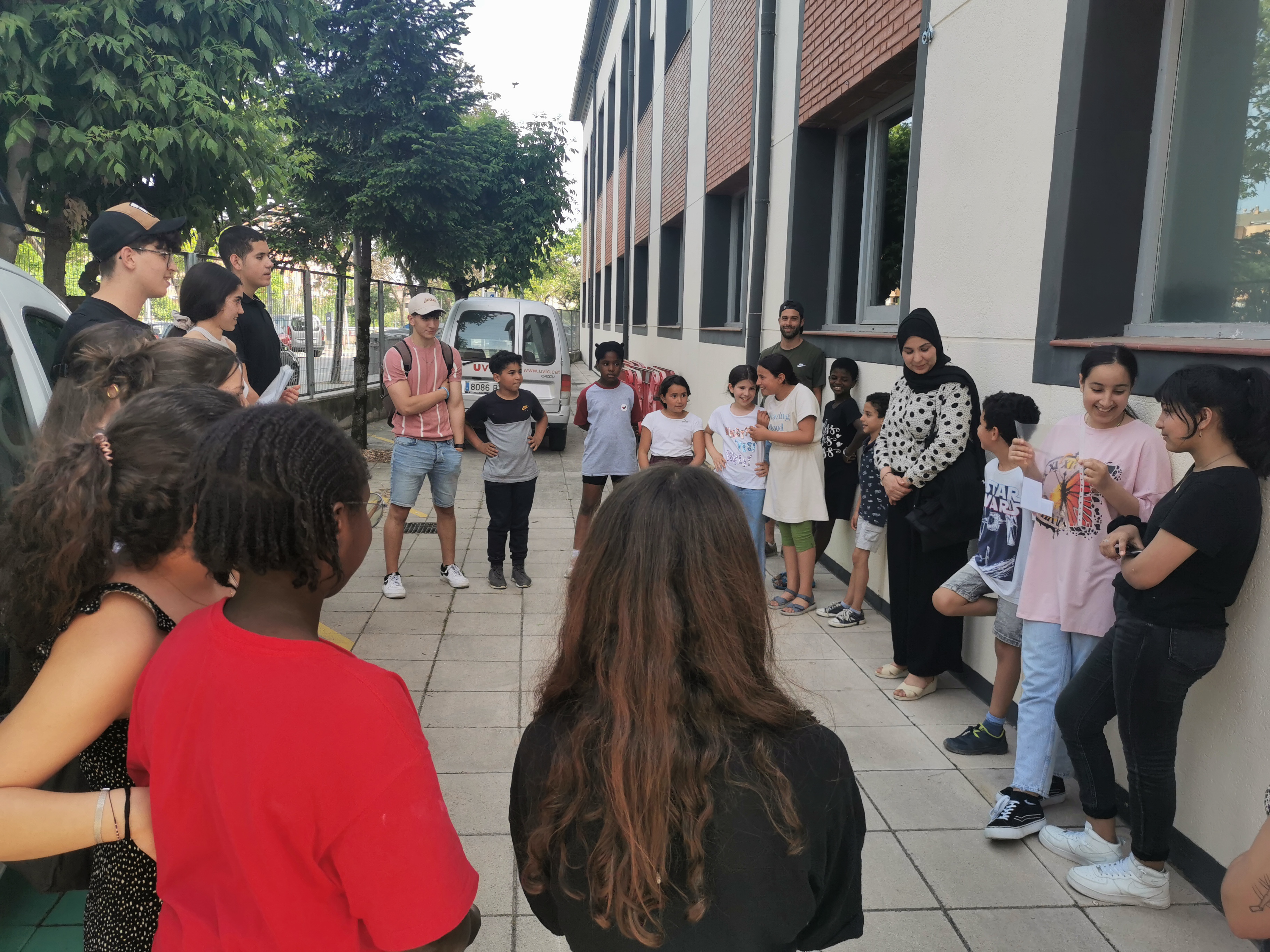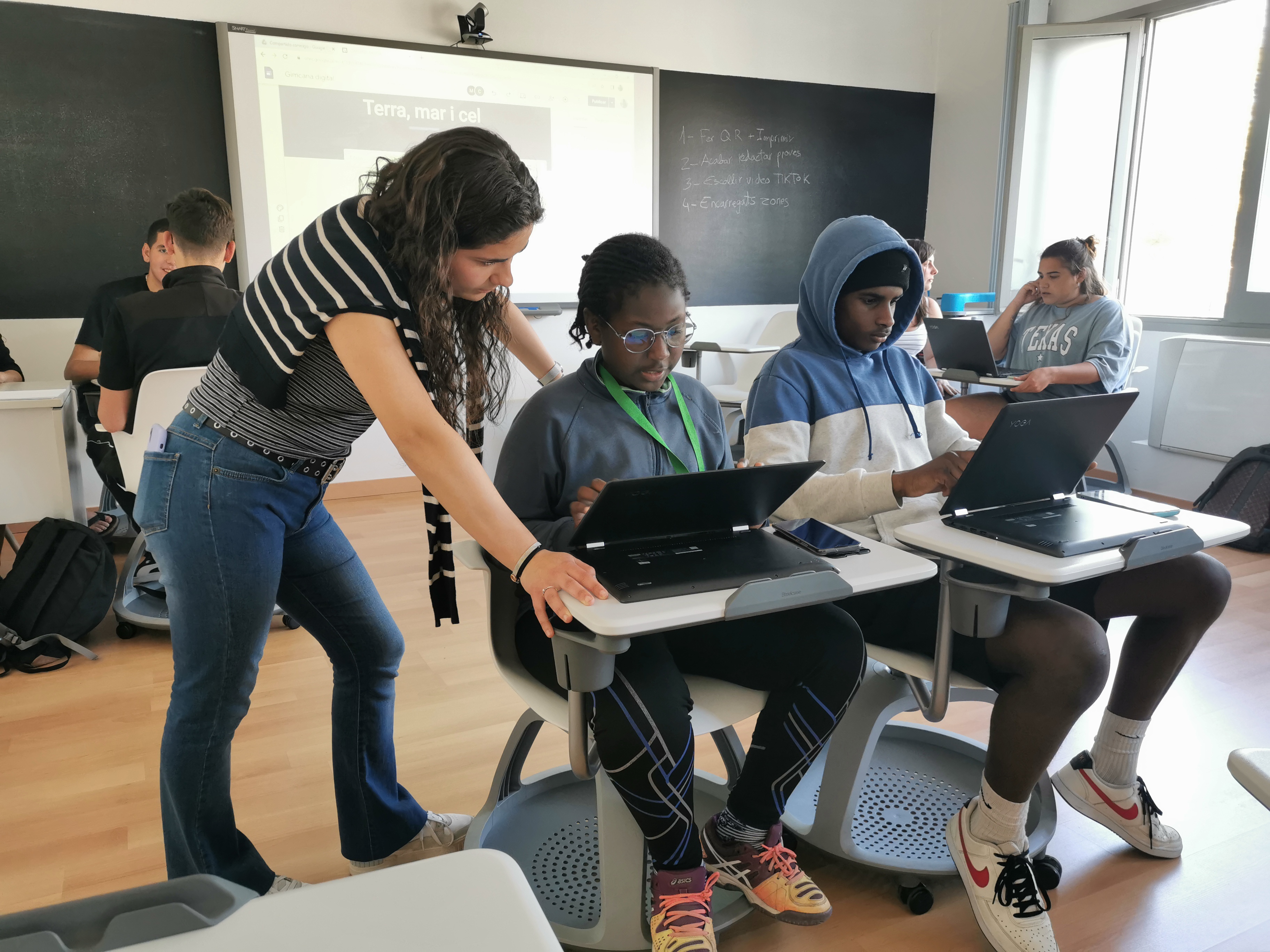





S-L: GINCANA DIGITAL FOR THE KNOWLEDGE OF THE TERRITORY.
Participating entity: Associació Casal Claret
Description of the S-L: creation of a digital gymkhana with the young people of the Casal Claret association that allowed the families of the children of the same entity to know several spaces of the city of Vic, especially playgrounds. It was an activity organized and energized by the group of teenagers and young people of the same entity and the students of the UVic-UCC. During the first two sessions the students of the university were able to meet the entity with which they would work and were able to make a planning proposal according to the challenge they had been set. Then, in the four subsequent sessions, the gimacana was designed and organized, recording all the steps and indications on a web page. Finally, in the last session, the children of the organization and their families were invited to carry out the gymkhana through the city. The activity included activities such as video recording, movement games, imitations, dances, among other activities that were articulated through QR codes and a web page.
Students from UVic: Marta Llastarri, Nil Comas, Cristina Juanola, Laia de Salsas, Tamara Hidalgo, Andrea Marquez i Agnès Navarro
Studies: 3rd course. Degree in Social Education
Course: 2021-2022 Participants: 3rd and 4th grade children of Casal Claret and their respective families, adolescents and young people of the Casal Claret.
Objectives:
- Prepare a digital gymkhana for families and teenagers of Casal Claret to learn more about the city of Vic.
- To enhance the motivation and creativity of the young participants to prepare a digital gymkhana.
- Offer digital learning opportunities in a different context than usual.
- Encourage the exchange of ideas and knowledge.
- To enhance the participants’ knowledge of the territory.
Reflections of UVic students
- We thought that teenagers would have a certain mastery of technologies and the different days that teenagers have come to the university, we have seen that this is not the case. We have been able to appreciate it when we gave them certain instructions that we thought they would be able to carry out easily and they did not know how to do it.
- We could see during the course of the various sessions that children and young people have limitations when it comes to using mobile data, as some of them were unable to access it.
- There are different levels of knowledge of the Catalan language. This caused that at the time of explaining an activity there were people with difficulties in understanding and oral expression in Catalan.
- One of the evidences detected during the realization of the project is the importance of the educational relationship, that is, the affective bond with the people we serve and work with. This is essential to get to know the young people, their interests, what motivates them, as well as their detected needs. As future educators we must know how to establish the bond taking into account the particularities of each person, although we are aware that it is not an easy process, it takes time, dedication, involvement and care. However, we are satisfied with the different bonds we have created with the adolescents.
- Our feeling regarding the overall socio-educational project carried out jointly with the young people of Casal Claret, has been very positive, since we have had the opportunity to meet the young people and jointly develop the realization of the digital gymkhana. Although it is true that in some sessions we have failed with respect to the organization, this error has helped us to plan and organize in more detail in the next sessions.
- As for the young people of Casal Claret, we think they have been satisfied with the outcome of the project and to have been able to share it with us, students of UVic, so they have made us understand verbally and through observable nonverbal communication (gestures, facial expressions, involvement …). ) Although we would have liked that in all sessions the number of participants would have been greater, since in none of the sessions will attend the 13 young people of Casal Claret Also, we would have liked that the day of the implementation of the gymkhana had attended a greater number of mothers, because for unknown reasons, only one attended.
- Social Education, unlike other professions, is a job where the planning that is initially established often does not end up being fulfilled, since working with people means that unforeseen events can arise frequently. For this reason, the organization that was planned to be carried out during the gymkhana did not turn out exactly as intended. The main idea of the project was that the gymkhana would be carried out by the children of Casal Claret and their families. It is here where the planning has failed, since only one mother has appeared. This fact has been another problem, because the digital gymkhana depended on the phones of these families. Therefore, as the mothers did not come, the children did not have telephones to follow the digitality of the proposal.
- The children were frightened from the beginning, which meant that they did not listen to the instructions of the gymkhana at all times. This is related to the fact that we, the students of the University, do not have an affective bond with them, as we have had with the adolescents and young people, therefore, we do not know how to manage the different situations that were presented to us. It is here where an educator from the Casal has been intervening to bring order with the children, thus making visible the importance that the bonding relationship has in any socio-educational action.
- As it was the first time we saw the children, and together with the nerves we had, some of the dynamics, especially at the beginning, we did not know how to explain them in a clear and understandable way. At the beginning it was a little difficult for the children to understand the dynamics of the pincer game, but once they were given examples, it ended up being a game with which they had a great time, or that is what they verbalized at the end of the gymkhana.
- While we headed to the second place for more activities, the students of the University, together with the young people of the Casal, we decided to skip the virtuality of the gymkhana, since in the absence of telephones it was chaos and we opted to have a better quality of relationship with the children even if this harmed our digital planning.
- One of the children, while a dynamic was being told, said “and what is this activity for”. This question, which may seem very simple or very normal, made us reflect on the child’s capacity to be interested in the objectives of the activity. This thought has made us realize that people, from an early age, look for the meaning of things and it is here where it is demonstrated that the significance of socio-educational actions has the opportunity to transform society.

